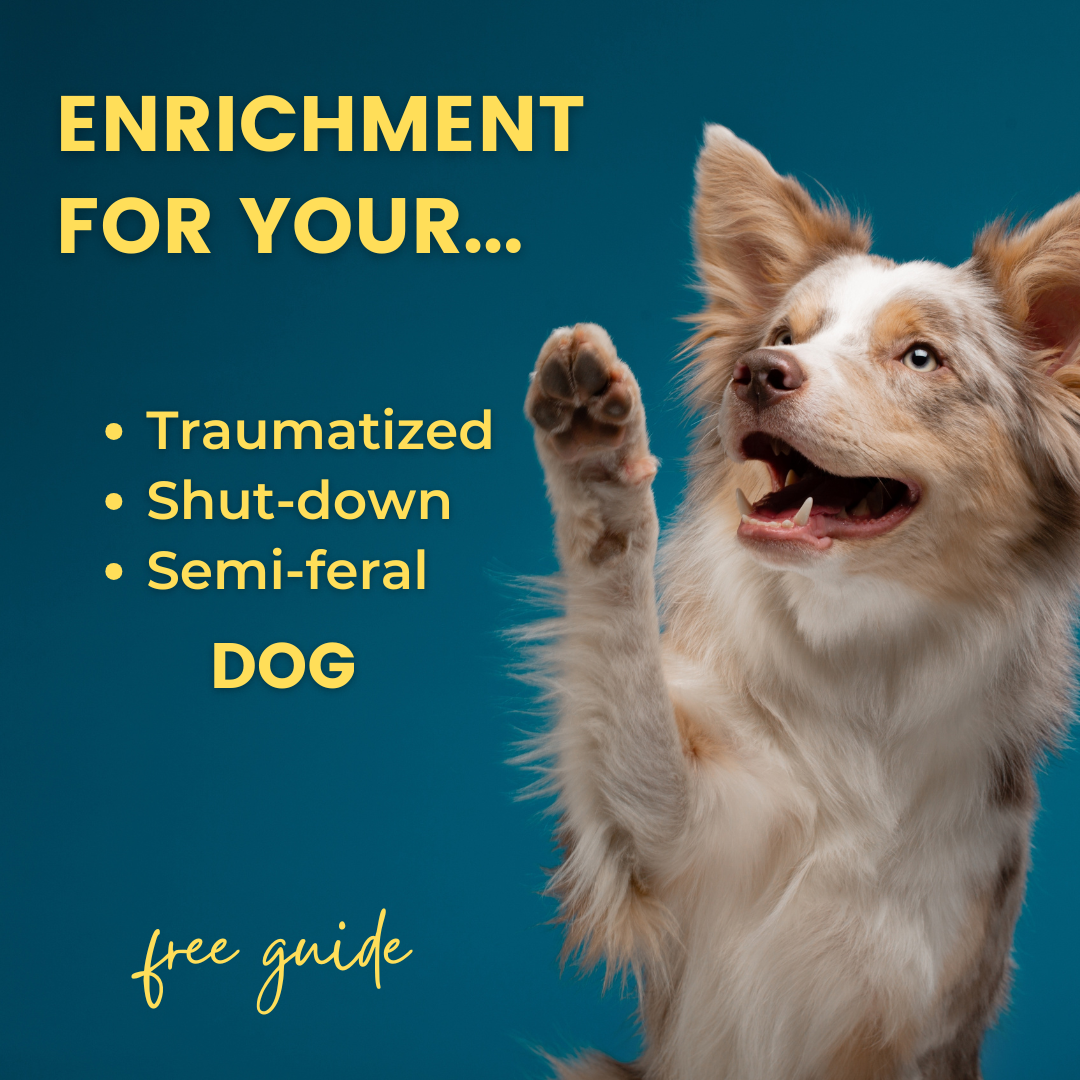
Does your dog try to avoid being leashed, or hate going out on walks? Many dogs adopted as adults have little to no experience being on leash. And as you’ve probably discovered, leash training a fearful adult dog is a whole different ballgame than leash training a puppy.
This week I shared how we introduced our fearful adult dog Pancake to the leash. This installment starts with the very first step of leash training, and ends with the dog wearing the leash and learning to move around with the leash on. In the next installment we’ll talk about how to teach a dog to be more comfortable with tension on the leash, and going for a walk.
A few key points covered in the video:
Choose a leash that will make your training easier
For a dog who has never been on a leash before, the process of having a leash clipped on, and the weight of the leash pulling down on their collar or harness, can be distressing. Your choice of leash can reduce, or worsen, these problems.
When you choose a leash to start training with, I usually recommend:
- A leash with a small, light clip;
- A leash clip that is very easy to manipulate, so you don’t spend time fumbling with it;
- A lightweight leash- light material, and thin;
- A short leash can be helpful in the very early stages of training.
Avoid forcing the leash onto your dog
It might feel impossible to avoid putting a leash on your dog while you’re working on leash training. But there is almost always a way to work around it. For example:
- Let your dog out into a fenced yard to eliminate, or;
- Set up in indoor “potty area”;
- Forgo walks and provide alternative exercise and enrichment;
- If you have to get a leash on for a very short distance like getting to the car, you could try something that doesn’t need to be clipped on, like a slip lead or a martingale collar with a leash already attached.
Pancake, who stars in this week’s video again, used potty pads (like those used for puppies) until he was brave enough to go outdoors.
Take your time, and get help
There is no rushing leash training with a fearful dog. Attempts to speed up or push the dog almost always backfire. Decide how slowly you think you need to progress through the training plan, and then move twice as slowly as that.
You’ll likely make faster progress, and feel less stressed and overwhelmed, if you have someone helping you with training your fearful dog. Join our monthly training membership and have trainers “on call” to answer your questions, or sign up for private training. You don’t have to do this alone.
If you try these tips and have success, or trouble, we want to hear from you. Join our Facebook group and post your questions or comments there, or reach out to us by email at [email protected]!
Categories


Have a dog who is too anxious to have fun? Grab this free guide & video lesson all about how to teach your extremely fearful dog their 1st enrichment game.


Community
We offer a free private Facebook support group for owners of fearful dogs to connect and share their stories. Join us there.


